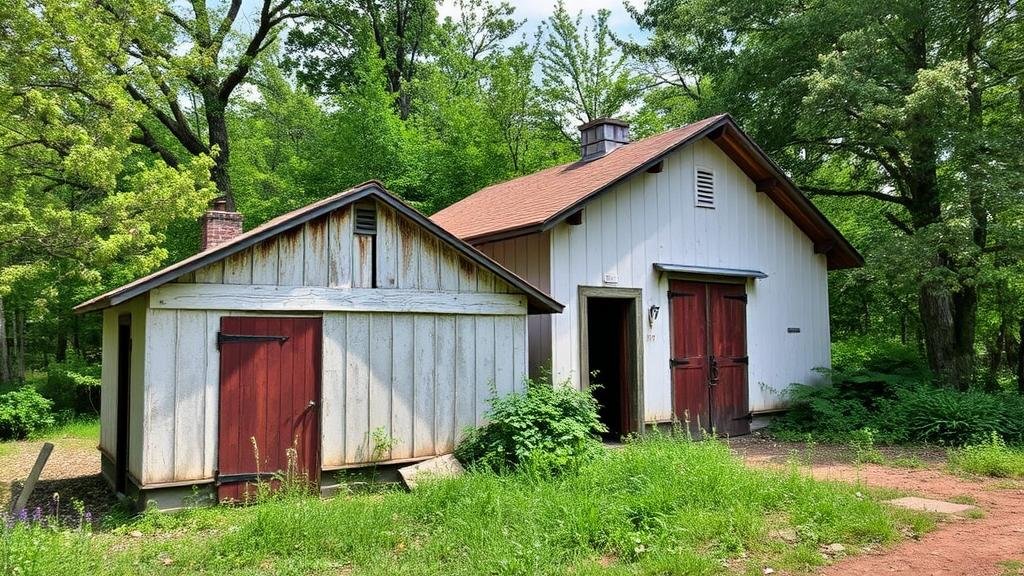Exploring Abandoned Vineyard Press Houses for Winemaking Relics
Exploring Abandoned Vineyard Press Houses for Winemaking Relics
The study of abandoned vineyard press houses serves as a significant branch of oenological archaeology, offering insights into historical winemaking practices and the cultural heritage of wine regions. This article aims to explore the relics found in these structures, highlighting their historical, functional, and cultural importance while also addressing methodologies for preservation and study.
Historical Background of Vineyard Press Houses
Vineyard press houses have been integral to winemaking since antiquity, evolving over centuries as techniques and technologies improved. The earliest presses can be traced back to the Roman Empire, where vertical screw presses were common. By the 17th century, horizontal wooden presses began dominating the winemaking landscape, particularly in regions such as Bordeaux and Burgundy, France.
According to data from the International Organisation of Vine and Wine, global wine production in 2020 was approximately 260 million hectoliters, illustrating the longstanding importance of viticulture. Many of the vineyard press houses dating back to this era continue to stand in various states of disrepair across Europe and North America.
Archaeological Significance
Exploration of these abandoned structures can lead to discoveries of valuable artifacts that contribute to the understanding of historical winemaking practices. Some notable findings include:
- Preservation of Ancient Tools: Winemaking tools such as wooden press platens and metal frames are often found in situ, providing insights into the technological advancements of the period.
- Fermentation Vats: The remnants of fermentation vessels can reveal specific winemaking techniques, including the use of different wood types and storage practices.
- Cultural Artifacts: Objects such as bottles, labels, and glassware offer direct connections to the cultural aspects of wine consumption and trade in past societies.
Methodologies for Exploration
The exploration process involves various methodologies including structural analysis, archaeological excavation, and historical research. Each method contributes to a comprehensive understanding of the site. The following processes can be undertaken:
- Site Survey and Mapping: Initial field surveys should create a detailed map of the site, noting structures and artifacts.
- Documentary Research: Investigating local archives and historical texts can yield background information and contextualize findings.
- Excavation and Analysis: Carefully excavating areas around the press houses allows for the retrieval of artifacts, which can then be analyzed in laboratories.
Case Studies
Several case studies illustrate the process and findings of exploring abandoned vineyard press houses:
- The Abandoned Press House of Catoosa County, Georgia (1790s): In a recent excavation, researchers uncovered a large wooden grape press, along with remnants of amphorae typically used for wine storage, allowing insight into the early American wine industry.
- The Historic Winery in Valais, Switzerland (17th Century): Archaeologists uncovered multiple fermentation vats and identified distinct layers of wine residue, which helped reconstruct historical winemaking processes prevalent in the region.
Challenges and Future Directions
The exploration of abandoned vineyard press houses is not without its challenges. Risks include structural instability and preservation concerns. Plus, ethical considerations regarding access to private lands must be acknowledged. Future directions for exploration may include:
- Technological Integration: Utilizing ground-penetrating radar and drone technology can provide non-invasive means of surveying sites.
- Collaborative Research: Engaging local communities and wine historians can enhance research efforts and promote awareness of cultural heritage.
Conclusion
The exploration of abandoned vineyard press houses provides invaluable data that contributes to the academic discourse surrounding winemaking and cultural heritage. As methodologies evolve and technology improves, greater insights into the historical significance of these structures can illuminate our understanding of the winemaking landscape of the past.
To maximize the potential of such explorations, collaboration among archaeologists, historians, and local communities is vital. relics of these press houses encapsulate stories that deserve preservation and sharing with future generations.



